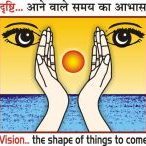Vision Institute of Technology, Kanpur
2010-11
- Define the following
(a)rise time (b)delay time (c)peak overshoot (d)steady state error (e) time constant. (f)Peak time - Discuss the effect of adding a zero of a system
- Draw the block diagram of the standard form of a second order control system. Derive the relations for response to step unit {U(t)-1} for different values of the damping ratio.
- Define the time response specification of a second order system for a unit ramp input. Derive these relations in terms of damping factor & Wn.
- What is the steady state error ?. derive the expression for the step & ramp inputs in type-1 system, what will be its value?.
- Explain what is damping ratio. Derive its expression.
2012-13
- Derive the formula for peak under shoot, rise time & peak time.
- A unity feedback system is characterized by the open loop transfer function:
- List the advantages and disadvantages of an open loop and closed loop system
2015-16
- Mention the nature of transient response of second order control system for different types of damping ratios.
- Discuss the time response of a first order control system subjected to unit ramp input. A certain unity feedback system is described by the following transfer function G(s)=
 determine the state error coefficients and also determine the value of K to limit steady state error to 20 units due to input r(t)= 1+10t+20t2
determine the state error coefficients and also determine the value of K to limit steady state error to 20 units due to input r(t)= 1+10t+20t2 - Derive the time response of a second order system subjected to unit step input.
- Derive the step response of a 1st order system.
2016-17
- What do you understand by type and order of system?
- A unity feedback control system is characterized by open loop
transfer function
determine the system gain K, so that the system will have a damping ratio of .5. for this value of K , find Rise Time, settling time, & Peak overshoot.
- The open loop transfer function of a system is G(S)H(S)=k(S+1)/(S3+bS2+3S+1). Determine the value of K & b so that the system will oscillate at frequency of 2rad/sec by using R-H method.
2017-18
- Obtain the response of unity feedback system whose open loop transfer function is G(S) = 4 / S(S+5) and When the input is unit step.
- What do you mean by dominant pole & What is an impulse response?
- What is steady state response?
- Derive the expressions and draw the response of first order system for unit step input.
- For a unity feedback control system the open loop transfer function G(S) = 10(S+2)/ S 2(S+1).Find (i) position, velocity and acceleration error constants. (ii)the steady state error when the input is R(S) , where R(S) =3/S –2/S2 +1/3S
- A positional control system with velocity feedback is shown in fig. What is the response c(t) to the unit step input. Given that ζ =0.5.and also calculate rise time, peak time, Maximum overshoot and settling time.
- A unity feedback system has an amplifier with gain Ka=10 and gain ratio G(S) = 1 / S (S+2) in the feed forward Path. A derivative feedback ,H(S)=SKo is introduced as a minor loop around G(S).Determine the derivative feedback constant ,Ko ,so that the system damping factor is 0.6
2018-19
- Define damping ratio
- What is an asymptote?
- Find also the static error coefficients and the errors for unit step and unit ramp inputs.
- Derive the time response of a second order system subjected to unit step input.
- What is steady-state error?
